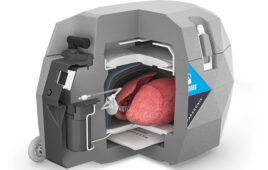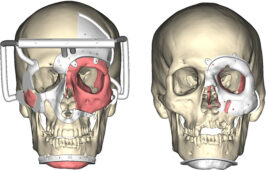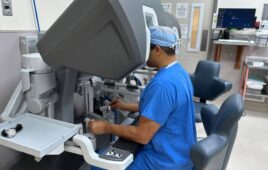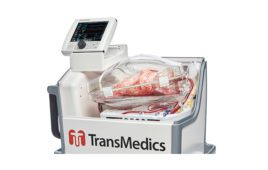“This is the first time that anyone has been able to scale up to a larger biological system and demonstrate successful, fast, and uniform warming hundreds of degrees Celsius per minute of preserved tissue without damaging the tissue,” said John Bischof, a University of Minnesota mechanical and biomedical engineering professor and senior author of the study, in a news release.
Researchers have previously only been able to rewarm 1 mm of tissue and solution in the past. The new study has shown success in rewarming up to 50 mm, leaving researchers with the possibility of being able to heat up larger-scale organs, according to Bischof.
Approximately 120,000 people are on a waiting list for an organ transplant in the U.S. alone, according to the American Transplant Foundation. A new name is added to the list every 10 minutes. On average, 22 people die per day waiting for an organ transplant. According to a Cryobiology journal article, 60% of hearts and lungs that are donated for transplants end up getting thrown away because the tissues can’t be kept on ice for more than 4 hours.
Long-term preservation methods that use vitrification preserve organs in an ice-free environment by cooling them to –160 to –198 °C. Even though the method uses no ice and can keep organs for a much longer time period, reheating the organs still poses a problem. Oftentimes, the organs can be damaged in the reheating process, rendering them useless.
The researchers in the University of Minnesota study wanted to tackle the issue with rewarming organs using a new method that involves silica-coated iron oxide nanoparticles. The nanoparticles are dispersed throughout a cryoprotectant solution that includes tissue. Iron oxide nanoparticles are essentially tiny heaters that surround the tissues and are activated using noninvasive electromagnetic waves that warm the tissues at 100 to 200 °C per minute. This method is 10 to 100 times faster than other rewarming methods.
Results from the research showed that none of the tissue faced any damage in the reheating process. The control samples used in the study were warmed slowly over ice or used convection warming and showed signs of harm.
The iron oxide nanoparticles were also able to be washed away after the tissue was warmed.
“We’ve gone to the limits of what we can do at very high temperatures and very low temperatures in these different areas,” Bischof said. “Usually when you go to the limits, you end up finding out something new and interesting. These results are very exciting and could have a huge societal benefit if we could someday bank organs for transplant.”
The researchers on the study are optimistic about being able to scale up the size of tissues that can be warmed, hoping to be able to heat up entire organs. They are going to apply the research to various rodent organs then move up to pig organs and then hopefully apply it to human organs in the future. The researchers also believe that the technology could be applied beyond cryogenics and could be used to deliver lethal pulses of heat to cancer cells.
The research was funded by the National Science Foundations, National Institutes of Health, U.S. Army Medical Research and Material Command, Minnesota Futures Grant from the University of Minnesota and the University of Minnesota Carl and Janet Kuhrmeyer Chair in Mechanical Engineering. The study was published online in the Science Translational Medicine journal. The University of Minnesota also has two patents related to this technology.
[Want to stay more on top of MDO content? Subscribe to our weekly e-newsletter.]





